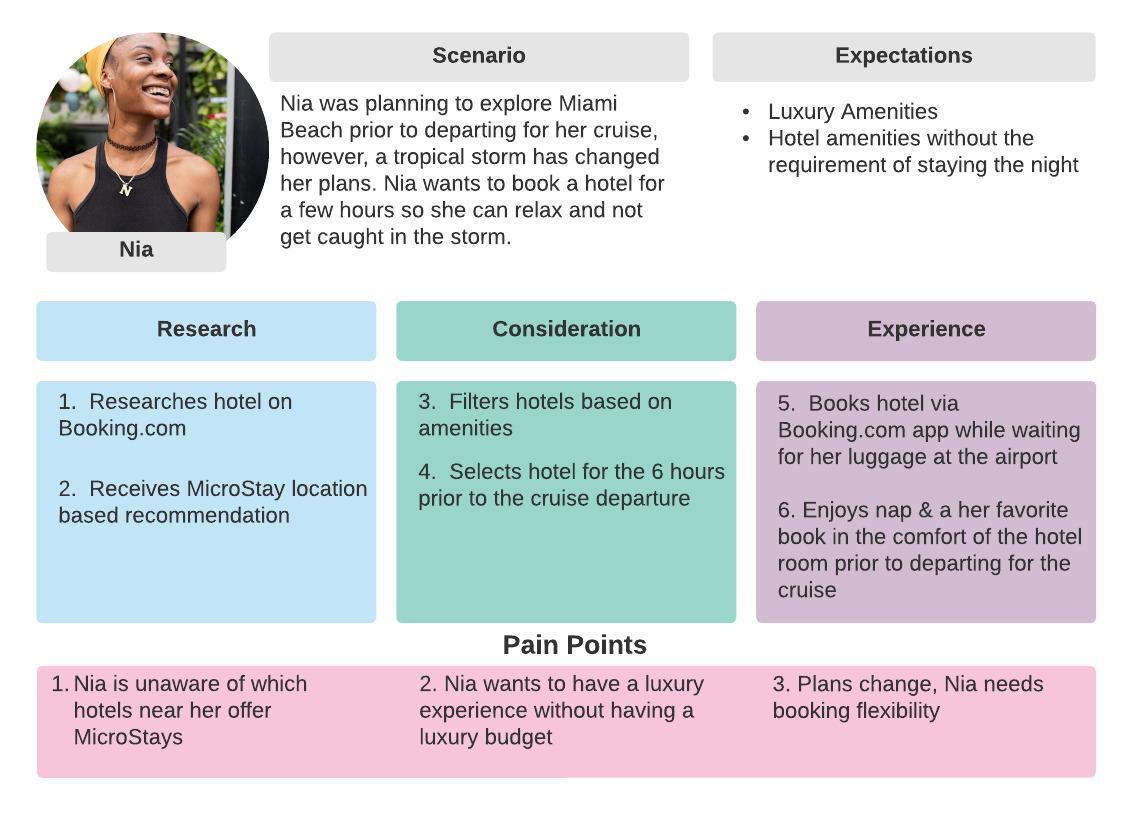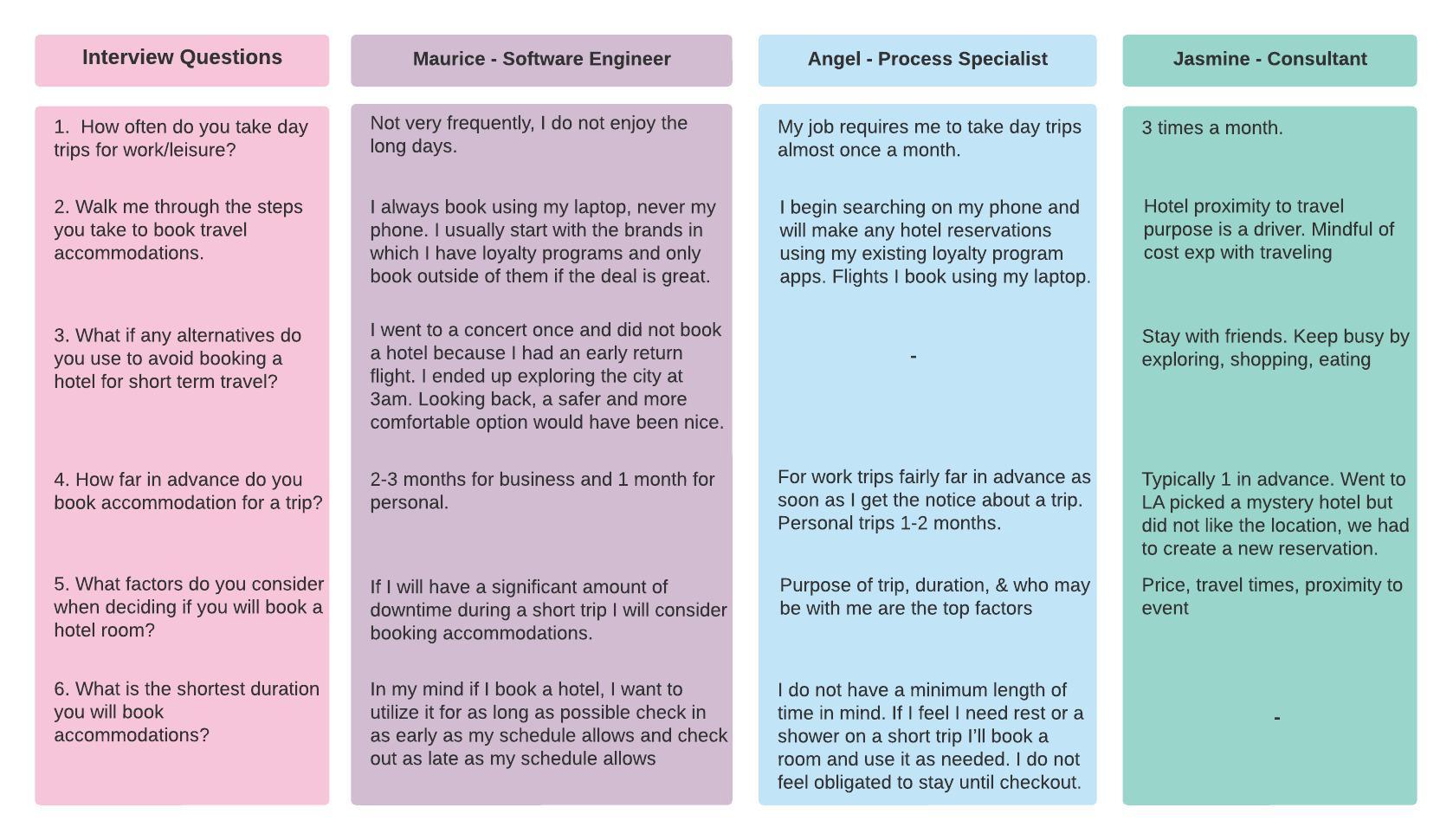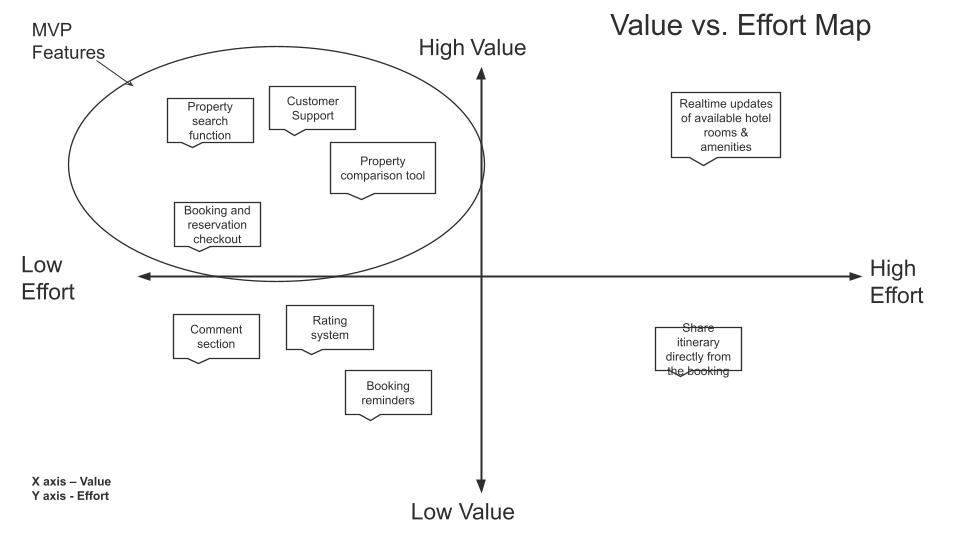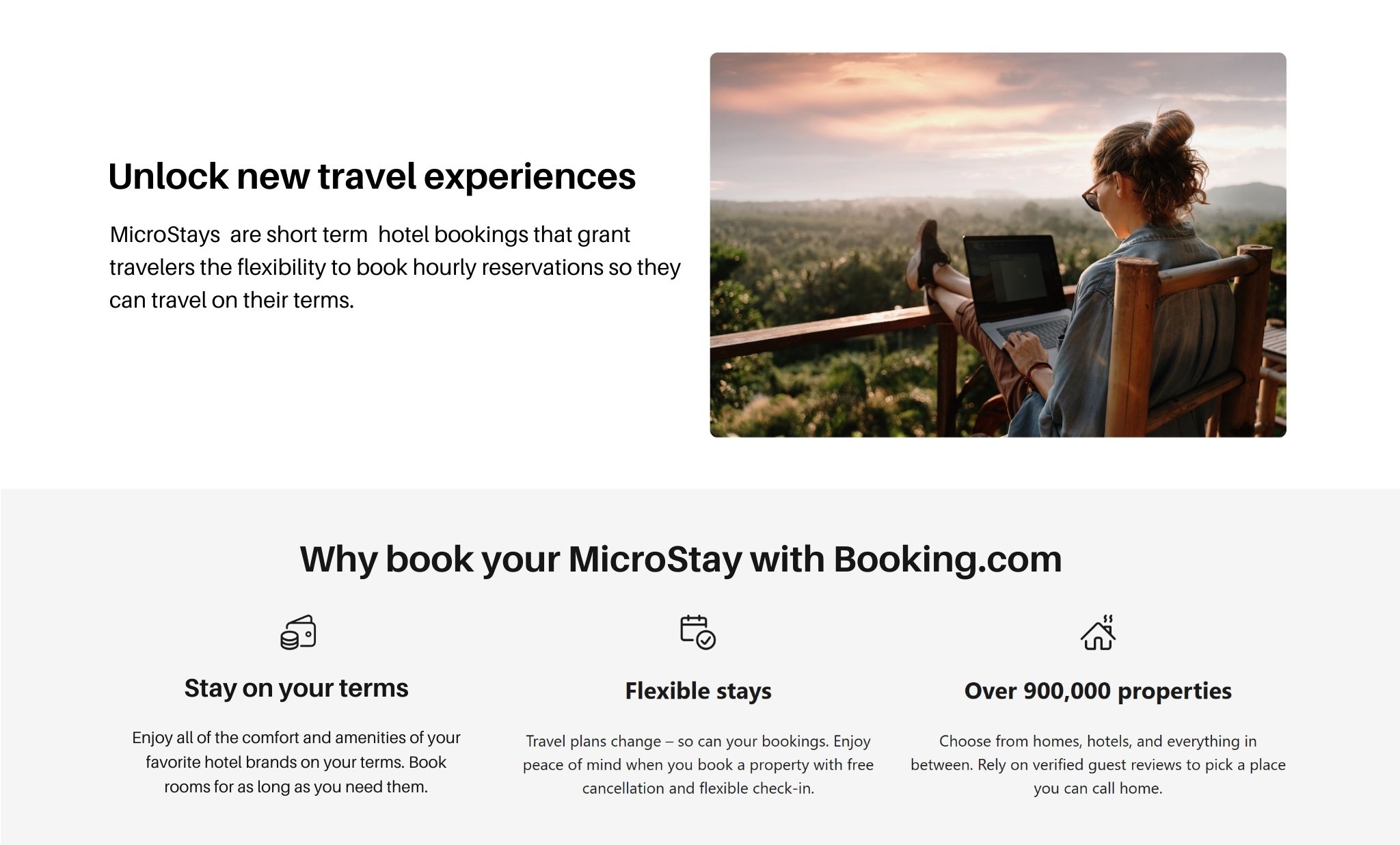MicroStays
Product Case Study
This case study was developed as part of EntryLevel’s Product Management Program. I was tasked with developing the requirements for a new product prototype for Booking.com. Booking.com is one of the largest online travel agencies in the United States.
The new product is hotel micro stays, which offers customers the flexibility to book hotel rooms by the hour and not for the full night. This case study documents the product launch strategy which includes defining and validating the customer problem / solution / market size, prototype ideation, crafting user stories, as well as identifying and prioritizing features to be built.

Case Study Overview
- Situation: Booking.com is considering launching a new product called MicroStays that allows customers to book hotel rooms for flexible and convenience stays shorter than the traditional overnight booking
- Task: Develop a MVP (minimum valuable prototype) to help inform what features should be included in product launch. The basis for the MVP was developed by identifying target customers and their needs through assumption mapping, conducting market research, and conducting interviews with potential customers.
- Action: In order develop the MVP for this product features were developed and prioritized. Prioritization was decided upon based on effort to accomplish and user needs.
- Result: Developed and designed a MVP to validate and test our hypothesis.
Problem Statement
For travelers who want to experience a destination for less than 1 full day but require the comfort and amenities of a hotel MicroStay by Booking.com is an online travel agency that gives travelers the power to book each step along their “travel”.
Unlike traditional bookings like AirBnB this product is provides travelers with convenient, flexible, and short term travel accommodations. We’ll know this is true when eligible travelers see microstays as the viable option for short term hotel stays
User Segmentation
Potential Users
- Young professionals who enjoy traveling during their leisure time.
- Parents with children on traveling sports teams in which the family has to visit other cities for events and tournaments.
- Influencers who want new locations to create (film) content.
User Journey & Pain Points

Prioritizing Assumptions
Importance: If we get this wrong, how likely is it that we will fail? | Importance 0 = Not Important 10 = Important
Risk: How much is known about this? | Risk 0 = Risky/Unknown 10 = Known/Less Risky
| Assumption | Importance | Risk |
|---|---|---|
| Travelers want hourly hotel accommodations enough to pay for it | 9 | 2 |
| Hotels are willing to book hourly accommodations | 10 | 1 |
| Micro-stays are cheaper than traditional bookings | 4 | 4 |
| Travelers think traditional hotel booking is inconvenient and expensive | 6 | 7 |
Market Research
Target Market: Travelers who want to experience a destination for less than 1 full day but require the comfort and amenities of a hotel.
Demographics: Travelers who want to experience a destination for less than 1 full day but require the comfort and amenities of a hotel.
Geography: People living further away from popular travel destinations, work in cities other than where they live. Market of focus will be continental US.
Psychographic info: People who are willing to pay for the comfort and convenience of hotel amenities between travel segments (flights,drives, etc), travel for purposes other than hotel accommodations (work, sporting events, tourism), people who want the comfort of a hotel without the commitment of a full night’s stay.
Behaviors: Tourist, business travelers who need accommodations for day travel, parents who travel with children for sports tournaments and need to freshen up before or after a tournament.
Growth Rate: The market size of the hotel and motel sector in the United States was valued at approximately 171.1 billion U.S. dollars in 2021, up from the previous year's total of 127 billion U.S. dollars. In 2022, the market size of this sector was forecast to reach 258.13 billion(3).
The Hospitality Industry in the United States is growing at a CAGR of 5.5% over the next 5 years (4).
Competitors
- Expedia.com
- AirBnb
- DayUse
User Interview Summary

Prototype Strategy
- Newsletter & Landing Page: Distribute a newsletter to existing loyalty customers within the target market announcing the product. The newsletter can lead to a landing page with simple search feature to allow customers to search available bookings.
- Within the test market utilize Booking.com’s existing site and add a section under offers that announces microstays and provides a brief explanation.
- Add a banner or offer to the home page asking travelers if they want to be notified when microstays go live.
Finding Users
Booking.com can utilize their existing customer base to identify participants for the prototype/testing of the microstay feature. Send out an email blast and push notification to all subscribed customers to participate in prototyping. Additionally, under the “Offers” section notify visitors about the launch of microstays allowing visitors to opt in to being notified about the launch.
Affinity Map
Framework for identifying MVP features

MSCW Framework
Must Have, Should Have, Could Have, Will Not Have Framework
| Must Have Features | Features that are required to ensure a seamless booking experience |
| Should Have Features | Features that support hotel listings |
| Could Have Features | Features that improve the customer experience but are not required to make a booking |
| Will Not Have These Features | Features that can be part of future enhancements on par with existing products |
Effort Value Mapping
Framework for prioritizing features based on effort & value

Defining Success - MVP Success Metrics
The goal is to increase user awareness and adoption of the MicroStay product.
Awareness - Does the user know about MicroStays
| Measure | Output |
|---|---|
| Website Traffic | Count of visitors the generates & where the traffic originates |
| Customer Feedback | Review tickets submitted by customers |
| Visitor Path Analysis | How visitors are navigating to, from and within the MicroStay product page |
Adoption - How many visitors are utilizing MicroStays
| Measure | Output |
|---|---|
| Number of MicroStay Reservations | How many visitors are making MicroStay reservations as a ratio of page visits |
| Bounce Rate | Count of visitors leaving the site after visiting the MicroStays landing page |
User Stories
As a traveler, I want to see available hotels and amenities, so I can book a hotel that meets my needsAs a traveler, I want to make last minute reservations, so I can relax during a long layover
As a traveler, I want to book my entire itinerary at once, so I can ensure all my travel needs are accounted for and I can enjoy my trip.
As a traveler, I want to see what other travelers are saying about the property, so I can make an informed decision based on the experience of other travelers
As a traveler, I want to have personalized recommendations based on my search, so I can book reservations near the activities I have planned
MVP Landing Page Banner
An announcement banner on the Booking.com home page for users within the test market
MVP MicroStay Announcement
An explanation within the offers section on Booking.com for users within the test market

Conclusion
Microstays is a new product from Booking.com for travelers who want to experience a destination for less than 1 full day but require the comfort and amenities of a hotel. Booking.com would be a first mover in this space by offering hourly stays at popular hotel brands.I recommend Booking.com develop a MVP for MicroStays targeted towards young professionals who enjoy traveling. The MVP should address travelers desire flexibility and the comfort of popular hotel brands when book short term stays. The success of the MVP will will be measured by monitoring the click through rate, bounce rate, and successful reservations of visitors during the test period.